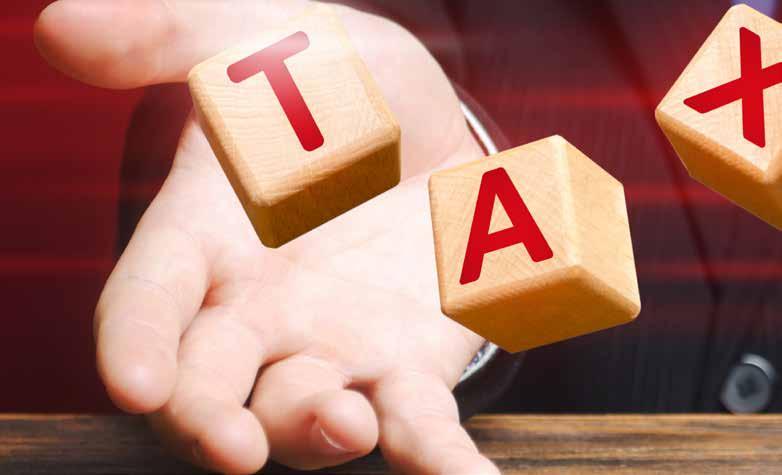
4 minute read
Reducing tax disputes-The way forward
(a) Reducing pending tax litigation A number of initiatives have been taken to reduce pending tax litigation (as listed in Section G and Annexure 2). The additional measure taken by the government in the Budget 2020 is the proposal for a legacy tax dispute resolution scheme for which a legislation has been introduced in the parliament as detailed earlier. The inspiration for this comes from the dispute resolution scheme used in case of the legacy indirect tax disputes -the Sabka Vishwas Scheme (Legacy Dispute Resolution) 2019 (SVLRDS-2019), which was in place from September 2019 to 15 January 2020 (see Annexure 3 for scheme details). Per the latest reports, it has led to closing of about 189,000 tax disputes. The SLRDS-2019 envisaged graded relief to the extent of 70 percent of disputed tax demands (see Figure 6 below).
Figure 6: Reliefs under the Sabka Vishwas Scheme 2019
Advertisement
Tax dues linked to INR 50 lakhs or less More than INR 50 lakhs (a) Show cause notice (SCN)/appeals pending as on 30.06.2019 70% 50% (b) SCN issued only with respect to late fee/penalty, and tax amount is paid or Nil Entire amount of late fee/penalty (c) Amount relating to arrears of tax or amount indicated in returns but not paid 60% 40% (d) Enquiry/investigation/audit and amount quantified on or before 30.06.2019 70% 50% (e) Voluntary disclosure by the declarant No tax relief except interest and penalty
As explained in the previous section, this gradation is currently absent in the proposed ‘Vivad se Vishwas’ scheme for direct taxes. Based on historical data about the success of income tax authorities in their appeals before various appellate forums, we would propose graded reliefs (refer Figure 7) in case of departmental appeals under the direct taxes scheme. Given that most of the tax litigation is generated by tax authorities, it needs to be realised that the income tax department, which is in appeal in these cases has a very low success rate. It is obvious that such a scheme can only succeed if the taxpayer (who would have a ruling in his favour at the lower level) is offered a substantial reduction on the original tax demand itself besides no levy of interest or penalty. The government will need to forgo an appropriate percentage of its “paper” demands in the scheme, so that taxpayers consider it worthwhile to opt for the scheme to gain tax certainty and reduce their litigation costs in terms of both money and time.
(b) Reducing the scope for tax litigation in the future While initiatives such as a dispute resolution scheme addressing pending litigation are welcome, a real and permanent solution to reduce Figure 7: Suggested slabs for the “Vivad se Vishwas” scheme 2020
S.No Nature of tax arrear Amount payable 1. Taxpayer appeal 100% of disputed tax 2. Departmental Appeal before ITAT 50% of disputed tax 3. Departmental Appeal before high court 30% of disputed tax 4. Departmental Appeal before Supreme Court 15% of disputed tax
tax litigation can only emerge if it addresses the institutional structure and governance within the tax administration on how tax disputes are resolved. As detailed in Section F, in other countries, as a general practice, one wing of the tax administration does not appeal against the appeal rulings given out by another section of the tax administration. In Australia, Canada, the United States, and the United Kingdom, once the tax administration decides on the tax liability of the taxpayer (whether by mediation or an appeal process), subsequently, only the taxpayer can appeal to the tax tribunal against the order of the tax administration. However in India, one wing (assessment wing) of the tax administration is empowered to appeal to the tax tribunal (ITAT) against the order of the appeals wing [CIT(A)] of the same tax administration.
Only when the income tax statute is amended to mandate that only a taxpayer
can file an appeal against the appellate authority of the tax administration [the CIT(A)], can the first step to a permanent solution be taken. The tax administration wing would, of course, retain power to reassess a taxpayer’s income in specific cases (e.g., subsequent detection of any fraud). The number of appeals filed before the ITAT will substantially reduce. This statutory measure will also need to be accompanied by structural changes within the tax administration. One concern could be that officials in the tax administration will become overly conservative (‘prorevenue’) in their decisionmaking if they perceive that their quasi-judicial powers as CIT (A) will not be subject to any appeal by the tax department. This has not been the case in other countries that allow only the taxpayer to file an appeal to the tax tribunal. Parallel institutional measures to strengthen the internal assessment and dispute
resolution procedures should accompany such a change. One step would be a common appellate division, which is functionally independent of the assessment division. After internally evaluating the taxpayer’s objections and the assessment wing’s observations on the assessment order, this division would take a final decision that is binding on the tax administration. This division would also take a uniform view on issues for deciding whether the income tax department would file an appeal against a tax tribunal (i.e. the ITAT) or a High Court order. Another step would be to streamline the assessment process to ensure that it is not based on the sole judgement of a single assessing officer. A good step in this direction is the launch of the e-assessment scheme in 2019
under which any modification to the taxpayer’s income by the assessing officer is subject to review by an independent wing of the tax administration before taking a final decision. Therefore, the time is right to bring about such a change that will be a step towards achieving the governments’ stated objective of building more trust with taxpayers and reducing tax litigation.








